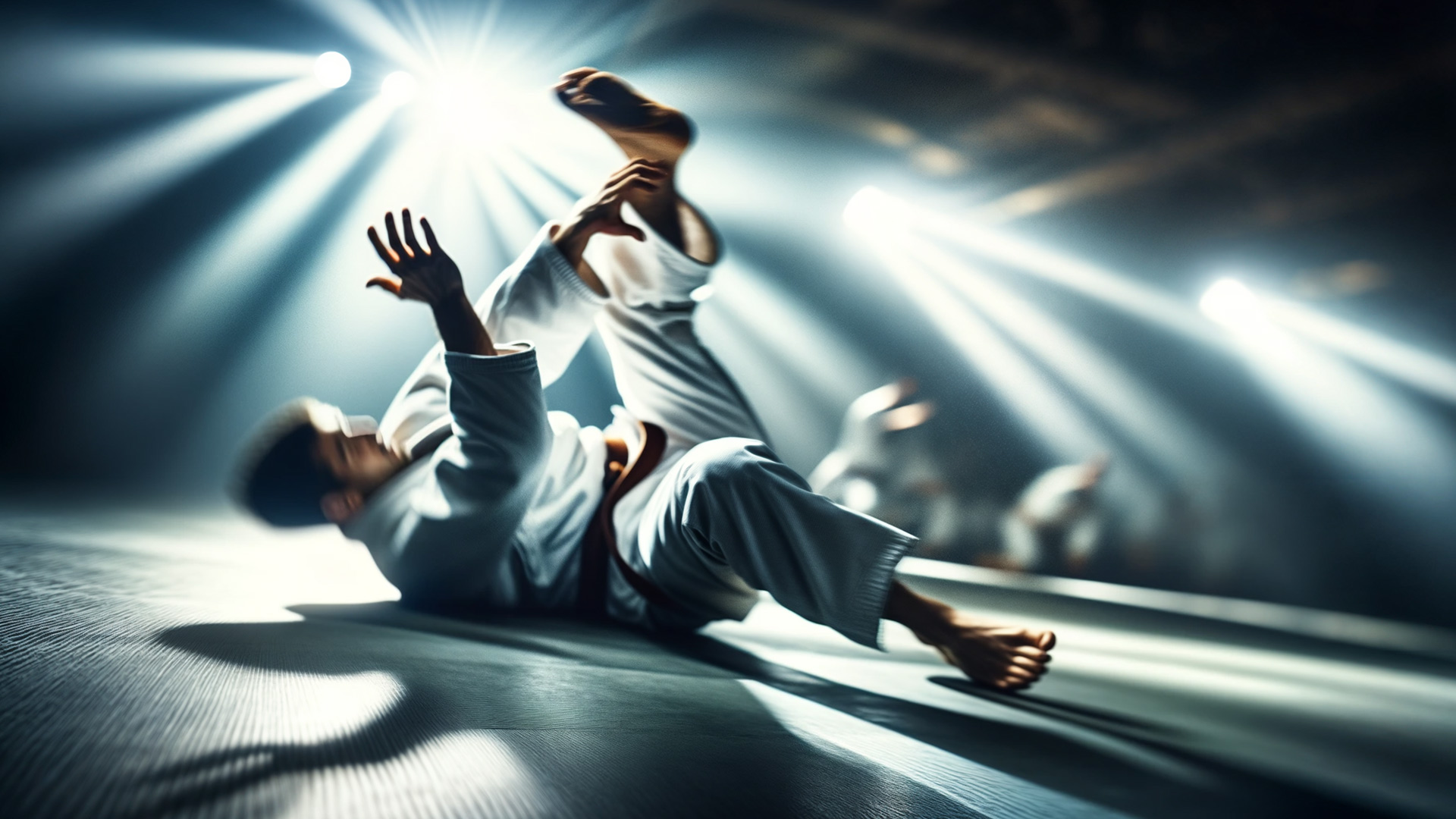Originating in Japanese martial arts, Ukemi focuses on safely navigating falls and attacks, highlighting the cultivation of both physical safety and psychological resilience. The practice extends beyond martial contexts, offering valuable strategies for injury prevention and psychological well-being.
Origin and Etymology
The term “ukemi” derives from the Japanese “受け身”, where “uke” means to receive and “mi” refers to the body. This concept is deeply rooted in the philosophy of mutual welfare and benefit, a principle central to judo and other martial arts. It underscores the importance of protecting both oneself and the partner during practice.
Types of Ukemi
- Mae Ukemi (Forward Roll): A technique used to safely absorb the force from a forward fall or throw.
- Ushiro Ukemi (Backward Roll/Fall): Techniques for safely landing from a throw or attack directed backward.
- Yoko Ukemi (Side Fall): Methods to safely fall to the side, minimizing impact and risk of injury.
- Zempo Kaiten Ukemi (Forward Rolling Fall): An advanced form of Mae Ukemi, involving a rolling motion to distribute impact across a larger area of the body.
Principles
- Safety: The primary objective of Ukemi is to prevent injury to oneself and one’s partner during practice.
- Fluidity: Ukemi techniques emphasize the importance of a relaxed body and smooth motion to effectively absorb and redistribute force.
- Readiness: Practitioners of Ukemi are trained to be constantly aware and prepared to receive an attack, facilitating a dynamic and responsive practice environment.
- Integration with Techniques: Ukemi is not only about falling safely but also understanding the mechanics of techniques to better anticipate and neutralize attacks.
Training and Application
- Training begins with basic falls and rolls, gradually progressing to more dynamic and complex scenarios.
- Practitioners learn to apply these techniques in a controlled environment, simulating real-life encounters without the risk of serious injury.
- Advanced Ukemi can involve strategies for counterattacks or transitioning into more favorable positions.
Philosophical and Practical Implications
- Beyond physical safety, Ukemi embodies the idea of resilience and adaptability, principles applicable in various life challenges.
- The practice promotes a mindset of preparedness and awareness, emphasizing the ability to respond to unforeseen circumstances with grace and efficiency.
- Mental and Emotional Resilience: Ukemi teaches practitioners to approach falls and failures as part of the learning process, fostering a mindset of resilience, perseverance, and adaptability.
Strategic Positioning and Awareness
Ukemi enhances strategic thinking and spatial awareness, teaching practitioners how to position themselves advantageously relative to their opponent and surroundings.
Distinctive Aspects
- Application Beyond Martial Arts: The principles of Ukemi, such as safe falling techniques, extend to injury prevention in daily life and sports, showcasing its broader applicability.
- The emphasis on mutual respect and care for the partner’s well-being fosters a collaborative learning environment.
- The comprehensive approach to safety and technique distinguishes Ukemi within martial arts, highlighting a proactive attitude towards receiving and neutralizing attacks.





